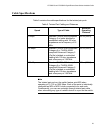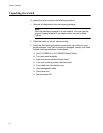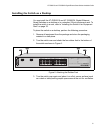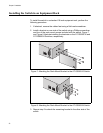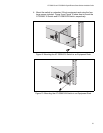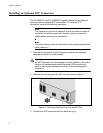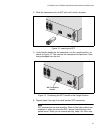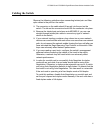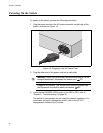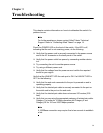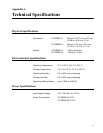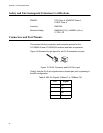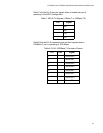
AT-GS950/16 and AT-GS950/24 Gigabit Ethernet Smart Switches Installation Guide
37
Cabling the Switch
Observe the following guidelines when connecting twisted pair and fiber
optic cables to the ports on the switch:
The connector on the cable should fit snugly into the port on the
switch. The tab on the connector should lock the connector into place.
Because the twisted pair ports have auto-MDI/MDI-X, you can use
straight-through twisted pair cable to connect any type of network
device to the switch.
If your network topology contains a loop where two or more network
devices can communicate with each other over more than one network
path, do not connect the network cables forming the loop until after you
have activated the Rapid Spanning Tree Protocol on the switch. Data
loops can adversely affect network performance.
If you are creating a port trunk, configure the switch’s management
software before connecting the cables of the trunk to the switch.
Otherwise, a network loop will result which can adversely affect
network performance.
In order for a switch port to successfully Auto-Negotiate its duplex
mode with an end node, the end node should also be using Auto-
Negotiation. Otherwise, a duplex mode mismatch can occur. A switch
port using Auto-Negotiation defaults to half-duplex if it detects that the
end node is not using Auto-Negotiation. This can result in a mismatch
if the end node is operating at a fixed duplex mode of full-duplex.
To avoid this problem, disable Auto-Negotiation on a switch port and
set the port’s speed and duplex mode manually if the end node has a
fixed duplex mode of full-duplex.



